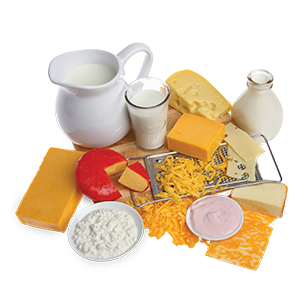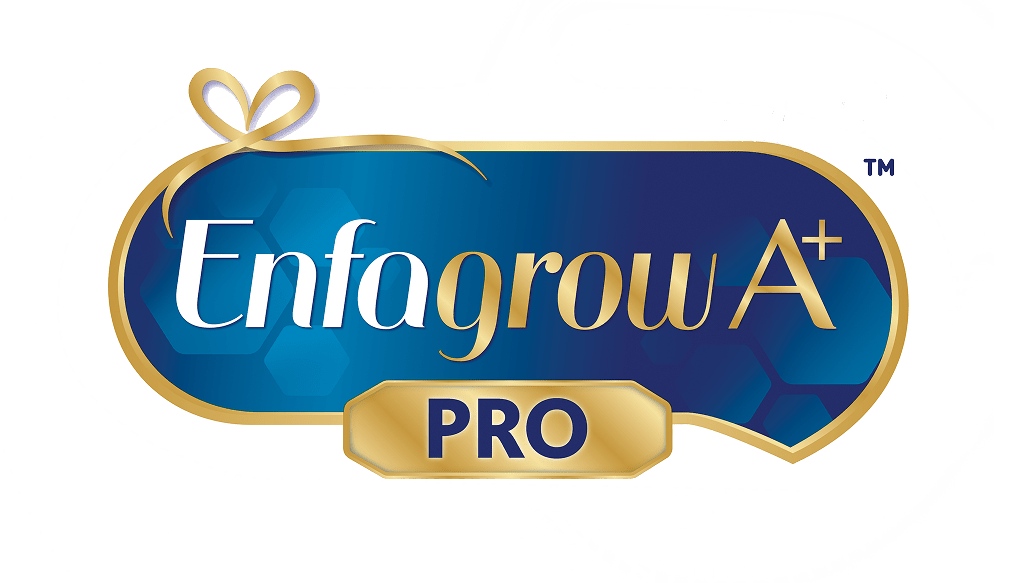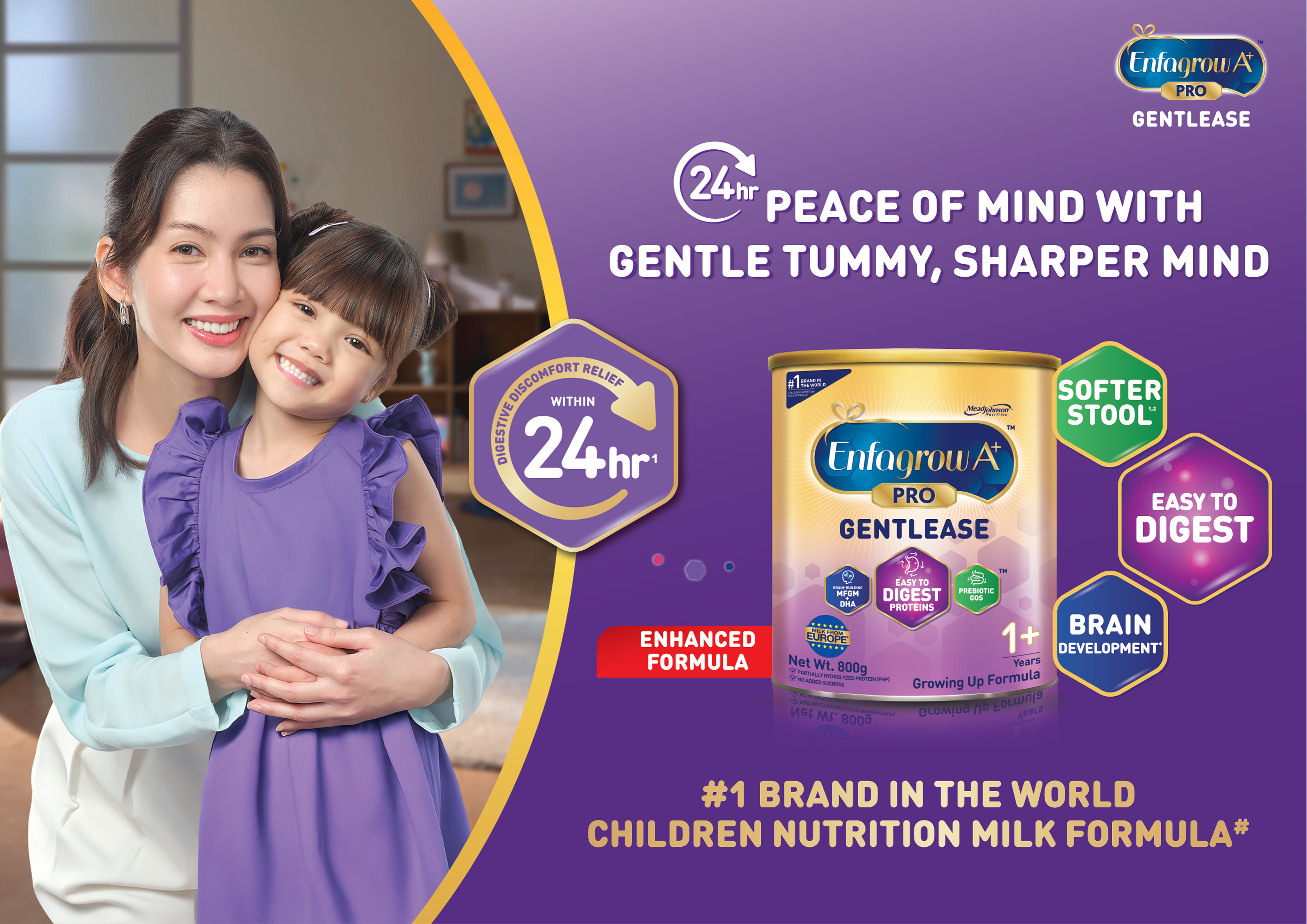
What key nutrients do toddlers need?
From 1- 3 years old, you child is growing faster than he will at age 4 to 5! At this time, his body will need to proper nutrients to fuel this growth. Even more, he will require appropriate nutrients in the correct amounts for 360° Development through the key areas of Cognitive, Motor, Emotional and Communication. So that from a toddler, he will develop into a well-rounded individual with exceptional learning.

DHA (docosahexaenoic acid) / ARA (arachidonic acid)
Docosahexaenoic acid (DHA) and arachidonic acid (ARA) are important building blocks for development of the brain and eyes in infant.
Where can my child get them?
Fatty cold water fish- such as salmon, bluefin tuna, black cod, sardines and herring contain DHA. Small amounts are also present in meat and eggs. ARA is found in nuts, seeds and vegetable oils- such as sunflower, safflower and corn oils. Meat, poultry and eggs contain ARA in small amounts.
Carbohydrates
Carbohydrates supply energy to fuel your child’s activity and growth; they help protein to be used efficiently in building new tissue. Glucose derived from carbohydrates is the brain’s main source of energy, and a steady supply helps regulate energy, mood and focus- all essential for learning.

Where can my child get them?
Whole grain products such as breads and cereals, potatoes, corn, legumes, fruits and vegetables.
Choline
Choline helps support overall mental functioning.
Where can my child get it?
Milk, liver, eggs and peanuts.
Iodine
Iodine is essential for the synthesis of thyroid hormones by the thyroid gland.
Where can my child get it?
Seafood and iodized salt.
Iron
Iron is an important component of red blood cells which carry oxygen to all parts of the body to help the body’s production of energy. Iron is needed to produce haemoglobin, the protein in red blood cells that carries oxygen to tissues. Iron is needed to produce myoglobin, the protein that helps supply oxygen to muscle.
Where can my child get it?
Meat, liver, legumes, whole grain breads and cereals, fortified or enriched grain products, and dark green vegetables.
Protein
Protein provides the essential amino acids needed to aid in the building and maintenance of body tissues. Protein helps in tissue building and growth.
Where can my child get it?
Meat, fish, poultry, egg yolks, cheese, yogurt and legumes.

Folate
Play a role in the formation of red blood cells.
Where can my child get it?
Liver, green leafy vegetables, legumes, whole grain breads and cereals, fortified or enriched grain products, oranges, cantaloupe and lean beef.
Riboflavin (Vitamin B2)
Riboflavin helps to release energy from proteins, fats and carbohydrates.
Where can my child get it?
Meat, dairy products, egg yolks, legumes, green vegetables, whole grain breads and cereals, and fortified or enriched grain products.

Thiamin (Vitamin B1)
Thiamin helps the body release energy from carbohydrates and is needed for the nervous system to function. It also plays a central role in brain development and metabolism.
Where can my child get it?
Lean meat, wheat germ, enriched products such as whole grain breads and cereals, legumes, and potatoes.
Vitamin A
Vitamin A is essential for the functioning of the eye and it helps to maintain normal skin and mucous membrane.
Where can my child get it?
Liver, egg yolks, and dark green and deep yellow fruits and vegetables.
Vitamin B12
Vitamin B12 is necessary for fat, carbohydrate and protein metabolism and helps in the formulation of red blood cells.
Where can my child get it?
Meat, fish poultry, cheese, egg yolks and liver.
Vitamin D3
Vitamin D3 helps support calcium absorption and improves bone strenght. Vitamin D3 helps the body utilize calcium and phosphorus.
Where can my child get it?
Egg yolks, liver, fatty fish and sunlight (synthesized in the body upon exposure of skin to sun).
Vitamin E
Vitamin E is an antioxidant that helps protect cells in the body. Anti-oxidants like carotenes and Vitamin E help to protect cells from free radicals that may have escaped the natural processes of our body system.
Where can my child get it?
Green leafy vegetables, vegetable oils, wheat germ, whole grain breads and cereals, fortified or enriched grain products, butter, liver and egg yolks.
Vitamin C


Vitamin C enhances absorption of iron from non meat products.
Where can my child get it?
Fruits (citrus fruits, papaya, cantaloupe, strawberries) and vegetables (potatoes, cabbage).




